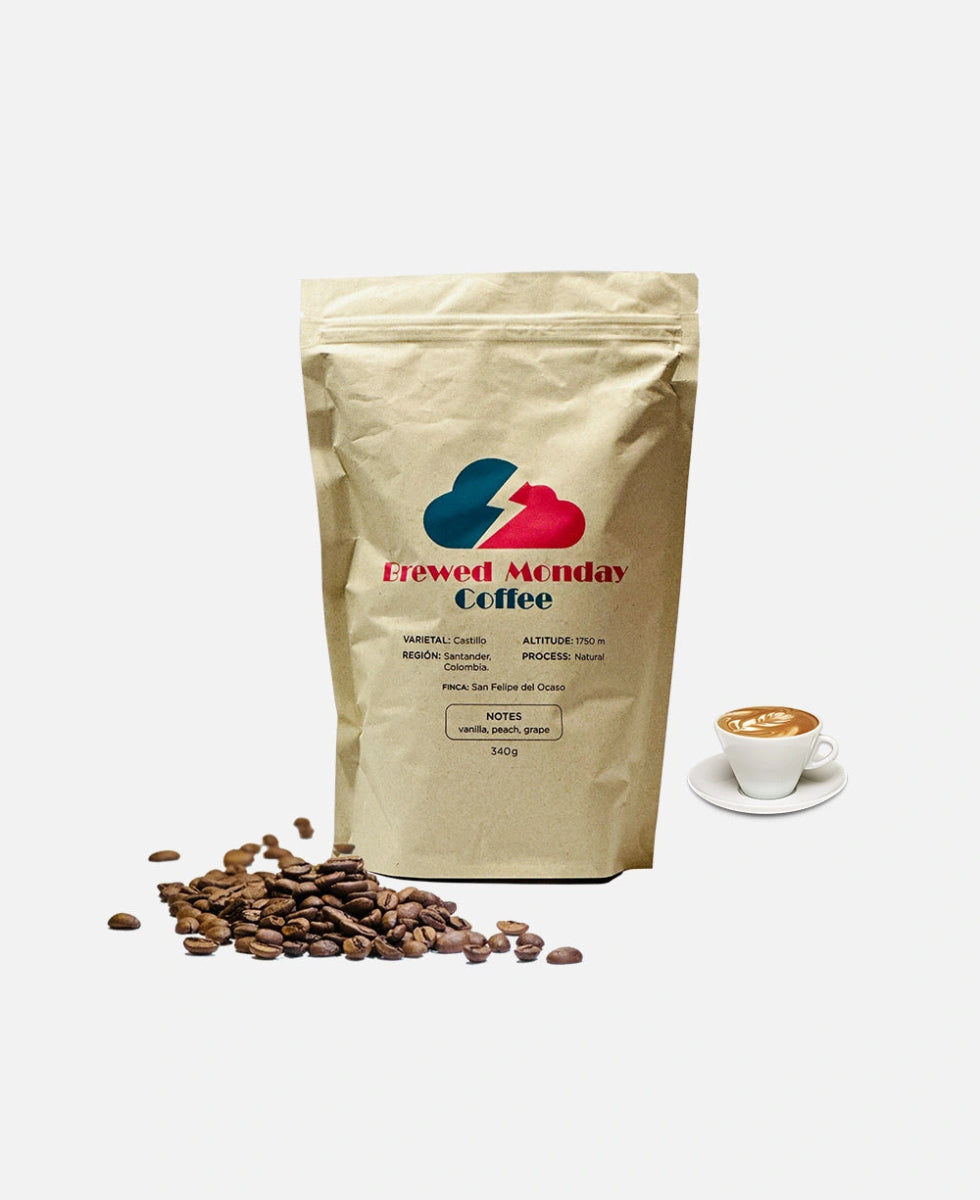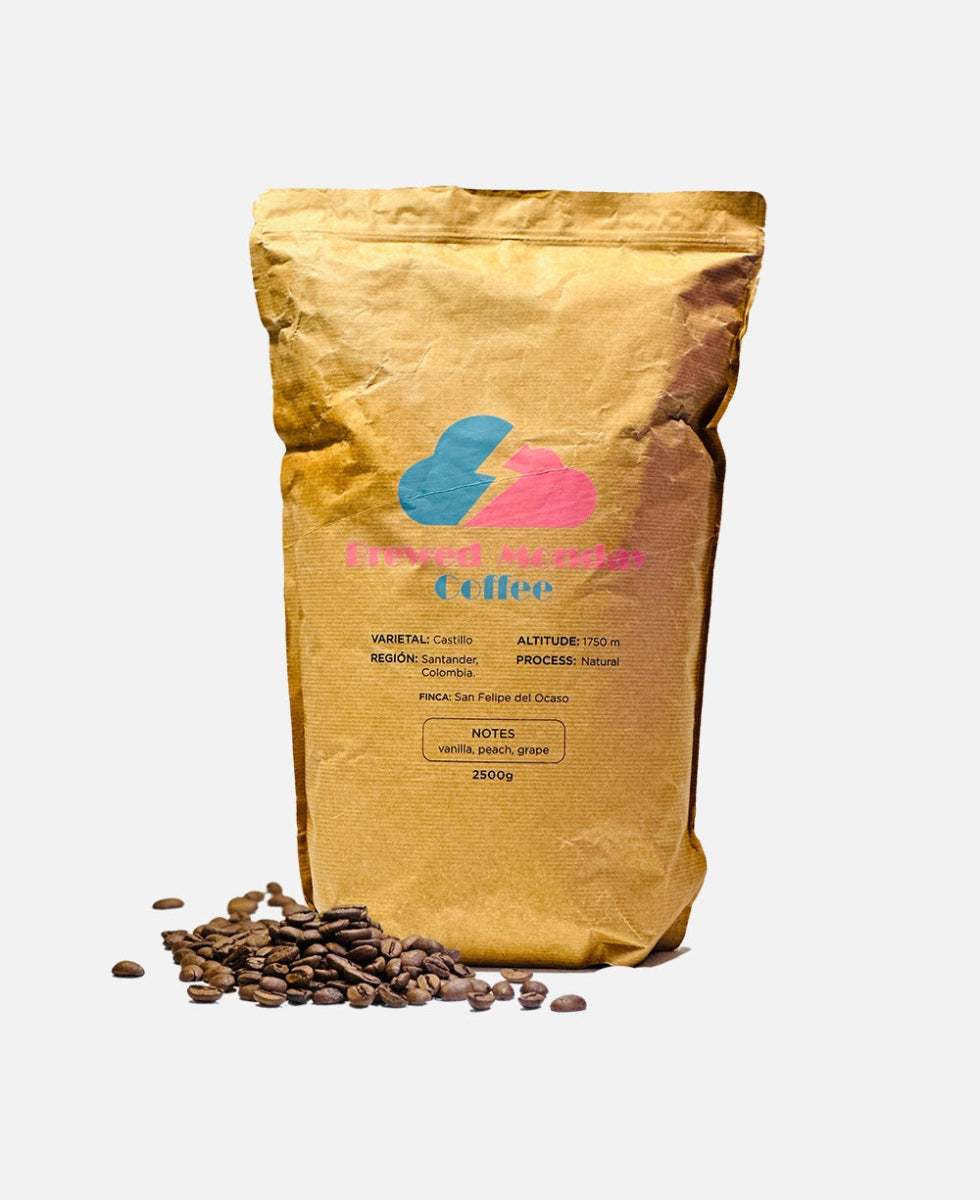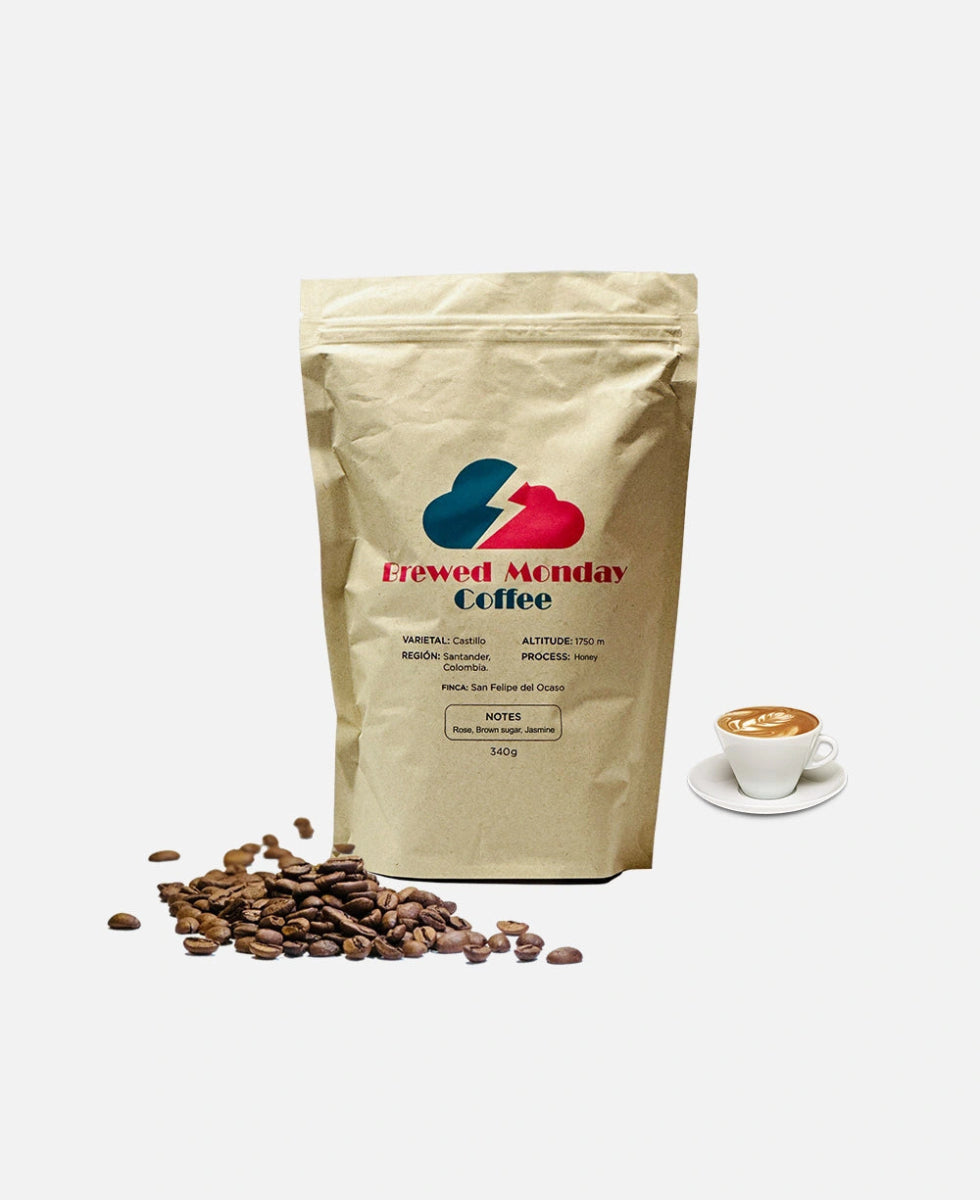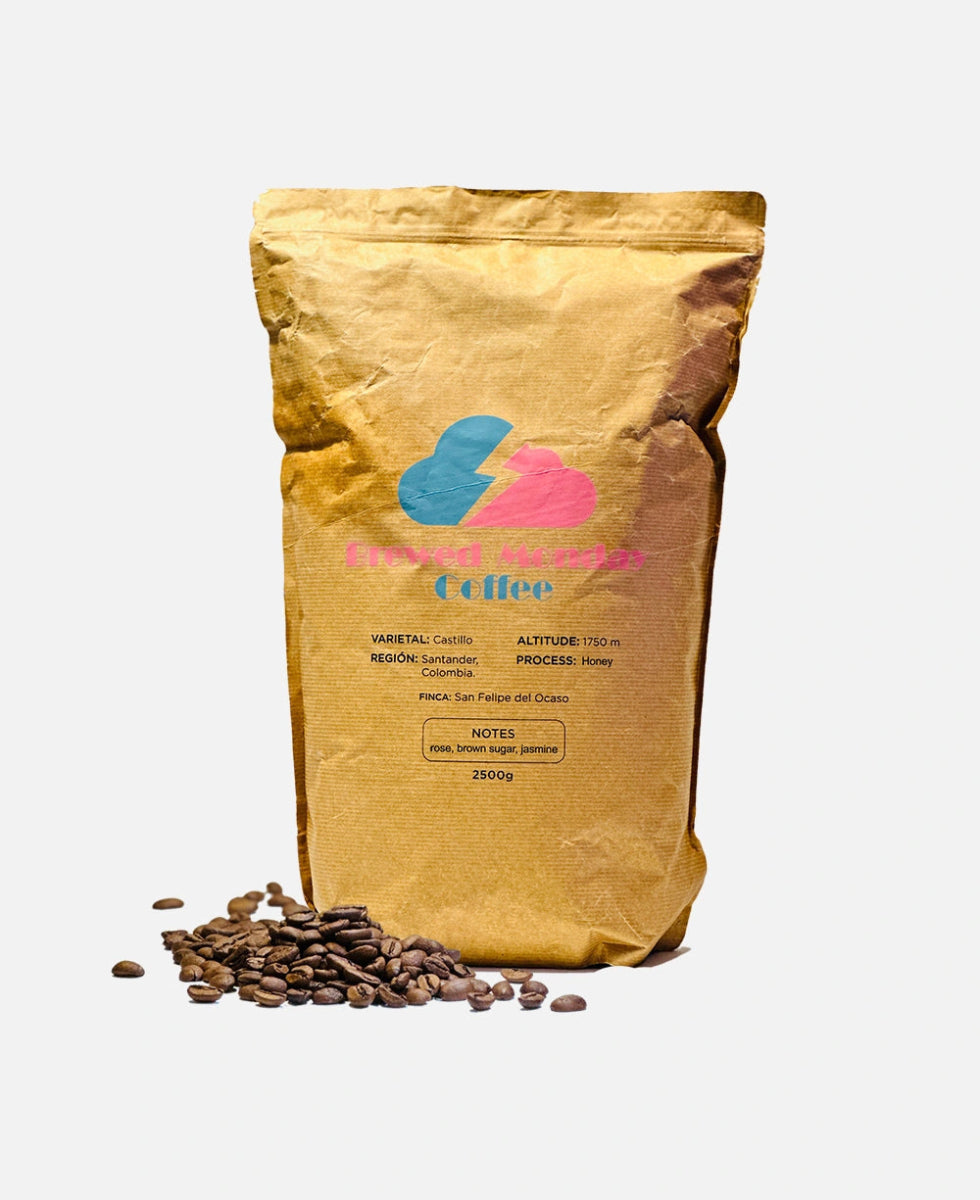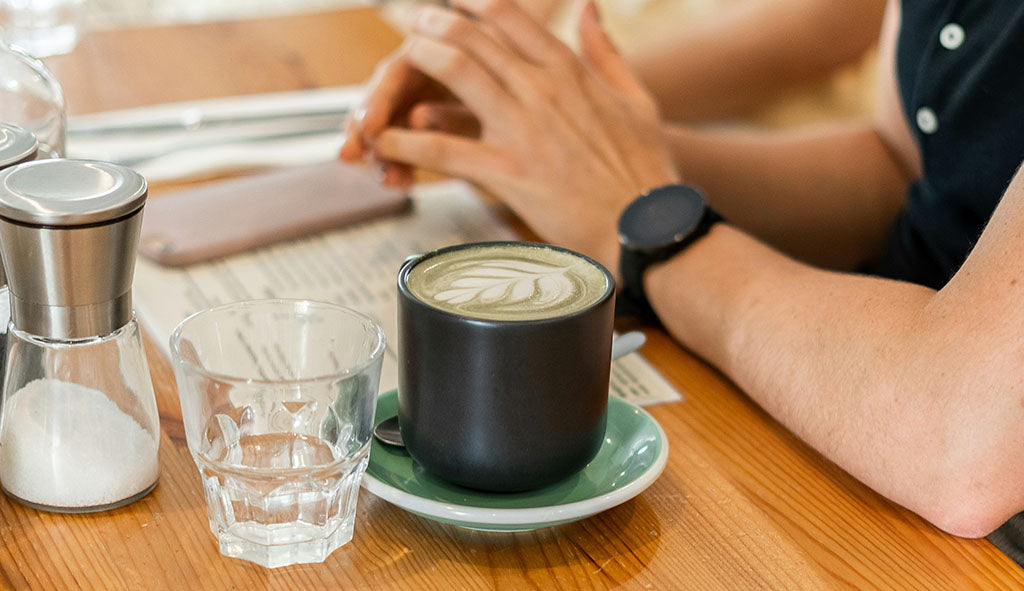
A Beginner's Guide to Crafting the Perfect Matcha Latte: Tips, Tricks, and Recipes

Are you a matcha lover looking to elevate your latte game? Look no further! In this beginner's guide, we'll take you through the steps of crafting the perfect matcha latte, complete with tips, tricks, and mouthwatering recipes. Whether you're a tea connoisseur or new to the world of matcha, we've got you covered.
With its vibrant green color and earthy flavor, matcha is a versatile ingredient that can be enjoyed in more ways than one. But how do you achieve that creamy, frothy goodness that you find in your favorite café? We'll share the secrets to achieving that perfect balance of flavors and textures.
Discover the best matcha brands, learn how to choose the right milk, perfect the whisking technique, and explore delicious variations of this beloved beverage. From classic matcha lattes to unique flavor combinations like matcha almond milk lattes or matcha chai lattes, we'll help you unleash your inner barista and create café-worthy drinks from the comfort of your own kitchen.
Get ready to embark on a matcha adventure and master the art of crafting the perfect matcha latte. Excited? Let's dive in!
What is matcha?
Matcha is a finely ground powder made from specially cultivated and processed green tea leaves. Unlike regular green tea, where the leaves are steeped in water and then removed, matcha is the entire leaf that has been ground into a vibrant green powder. This unique processing method allows you to consume the entire tea leaf, which means you get a more concentrated dose of the tea's beneficial compounds.
Matcha tea originated in Japan, where it has been revered for centuries as a central part of the traditional Japanese tea ceremony. The tea plants used to make matcha are grown in the shade, which increases their chlorophyll content and gives the resulting powder its signature bright green hue. This shading process also boosts the amino acid content, particularly L-theanine, which is responsible for matcha's umami-rich, subtly sweet flavor profile.
To create matcha, the freshly harvested tea leaves are steamed, rolled, and then ground into a fine powder using specialized granite stone mills. The resulting matcha powder is then carefully stored to preserve its freshness and vibrant color. Matcha is a versatile ingredient that can be whisked into hot water to make a traditional Japanese green tea, or it can be incorporated into a variety of recipes, from lattes and smoothies to baked goods and desserts.
The benefits of matcha
Matcha is more than just a delicious beverage – it's also packed with numerous health benefits. As a concentrated source of green tea, matcha is rich in antioxidants, particularly a catechin called epigallocatechin gallate (EGCG), which is known for its powerful anti-inflammatory and cancer-fighting properties.
Studies have shown that regularly consuming matcha can help boost metabolism, improve brain function, and even support heart health. The amino acid L-theanine found in matcha has been linked to reduced stress and anxiety levels, as well as improved focus and concentration. Matcha's unique combination of caffeine and L-theanine also provides a smooth, sustained energy boost without the jitteriness often associated with other caffeinated beverages.
Beyond its nutritional benefits, matcha is also a versatile ingredient that can be enjoyed in a variety of ways. Whether you prefer a classic matcha latte, a refreshing matcha smoothie, or a delectable matcha-infused dessert, this vibrant green powder can add a delightful boost of flavor and wellness to your daily routine. Incorporating matcha into your diet is an easy way to unlock a world of culinary possibilities while also supporting your overall health and well-being.
The difference between matcha and regular green tea
While both matcha and regular green tea come from the Camellia sinensis plant, the way they are processed and consumed sets them apart. Regular green tea is made by steeping the dried, rolled leaves in hot water, which allows the drinker to enjoy the tea's flavor and aroma. The leaves are then discarded, leaving behind the brewed liquid.
Matcha, on the other hand, is made from the entire tea leaf that has been ground into a fine powder. This means that when you drink matcha, you are consuming the entire leaf, not just the extracted liquid. This key difference results in several notable distinctions between matcha and regular green tea.
First and foremost, the nutrient and antioxidant content of matcha is significantly higher than that of regular green tea. Because you are consuming the entire leaf, you get a concentrated dose of beneficial compounds like chlorophyll, vitamins, minerals, and the powerful antioxidant EGCG. Regular green tea still provides these benefits, but in a more diluted form.
Another key difference is the flavor profile. Matcha has a rich, umami-like taste with subtle sweetness, while regular green tea tends to be more grassy, vegetal, and astringent. This is due to the shading process that matcha undergoes, which alters the tea plant's chemical composition and enhances the amino acid content.
Lastly, the preparation methods for matcha and regular green tea are quite different. Matcha is prepared by whisking the powder into hot water, creating a frothy, vibrant green beverage. Regular green tea, on the other hand, is steeped in hot water and then the leaves are removed, leaving behind a clear, pale green liquid.
Essential tools and ingredients for making matcha latte
To craft the perfect matcha latte at home, you'll need a few essential tools and ingredients. Let's start with the basics:
Matcha powder: The foundation of any great matcha latte is high-quality matcha powder. Look for ceremonial-grade matcha, which is the highest quality and most expensive, or premium-grade matcha, which is a more affordable option that still delivers excellent flavor and aroma.
Milk: The choice of milk can greatly impact the overall texture and taste of your matcha latte. Traditional matcha lattes are often made with dairy milk, but you can also experiment with plant-based milks like almond, oat, or soy to create dairy-free or vegan versions.
Milk frother: A milk frother is a crucial tool for achieving the signature creamy, frothy texture of a matcha latte. You can use a handheld milk frother, a standalone electric milk frother, or even a French press to aerate and froth the milk.
Matcha whisk (chasen): Also known as a chasen, a traditional Japanese matcha whisk is designed to thoroughly incorporate the matcha powder into the hot water or milk, creating a smooth, lump-free consistency.
Matcha bowl (chawan): While not entirely necessary, a traditional Japanese matcha bowl can enhance the overall experience of preparing and enjoying your matcha latte. These bowls are designed to facilitate the whisking process and showcase the vibrant green color of the matcha.
With these essential tools and ingredients, you'll be well on your way to crafting the perfect matcha latte right in your own kitchen. Let's dive into the step-by-step process next.
Step-by-step guide to making a basic matcha latte
Now that you have all the necessary tools and ingredients, let's walk through the step-by-step process of making a classic matcha latte:
- Start by gathering your matcha powder, milk of your choice, and a milk frother.
- Prepare the matcha by sifting a small amount (usually 1-2 teaspoons) of the powder into a matcha bowl or other small, wide-mouthed vessel. This helps to break up any clumps and ensures a smooth, lump-free mixture.
- Add a small amount of hot water (around 2-3 tablespoons) to the matcha powder and use the matcha whisk to briskly whisk the mixture in a zig-zag or circular motion until it becomes smooth and frothy. The goal is to incorporate air into the matcha, creating a creamy, foamy texture.
- In a separate vessel, heat your milk of choice until it's steaming hot but not boiling. Use your milk frother to aerate and froth the milk, creating a rich, creamy texture.
- Slowly pour the frothed milk into the prepared matcha, gently stirring to combine. The matcha should retain its vibrant green color and the milk should create a smooth, creamy layer on top.
- If desired, you can add a touch of sweetener, such as honey or maple syrup, to balance the slightly bitter notes of the matcha.
- Finally, you can garnish your matcha latte with a sprinkle of additional matcha powder, a dusting of cinnamon, or a drizzle of honey for an extra touch of elegance.
And there you have it – a perfectly crafted matcha latte, ready to be savored and enjoyed! Remember, the key to achieving the perfect texture and flavor is in the whisking technique, so don't be afraid to practice and experiment until you find your ideal method.
Tips for frothing milk for matcha latte
Frothing the milk is a crucial step in creating the signature creamy, frothy texture of a matcha latte. Here are some tips to help you master the art of milk frothing:
Temperature is key: The ideal milk temperature for frothing is between 150°F and 160°F (65°C and 71°C). Heating the milk too hot can cause the proteins to denature, resulting in a thin, watery texture. Aim for steaming hot, but not boiling.
Aerate the milk: The key to creating a rich, creamy froth is to incorporate as much air as possible into the milk. Use your milk frother to vigorously whisk and aerate the milk, creating a thick, velvety foam.
Angle the frother: When frothing the milk, hold the milk frother at a slight angle, just below the surface of the milk. This will help draw in more air and create a greater volume of foam.
Shake and swirl: After frothing, give the milk a gentle shake or swirl to further incorporate the air bubbles and create a smooth, uniform texture.
Use the right milk: While dairy milk is a classic choice, you can also experiment with plant-based milks like almond, oat, or soy. Each type of milk will have a slightly different frothing ability, so you may need to adjust your technique accordingly.
Chill the milk: For an extra-creamy latte, try chilling your milk before frothing. Cold milk tends to hold its foam better, resulting in a richer, more indulgent texture.
With a little practice, you'll be able to consistently create the perfect, velvety milk froth to complement your matcha latte. Remember, the key is to be patient and experiment to find the technique that works best for you and your milk of choice.
Variations and customizations for matcha latte
While a classic matcha latte is a delightful treat, the beauty of this versatile beverage is that it can be customized and enhanced in countless ways. Here are some tasty variations to explore:
Flavored matcha lattes: Infuse your matcha latte with additional flavors, such as vanilla, cinnamon, ginger, or even lavender. Simply add a few drops of flavor extract or a sprinkle of spice to the matcha and milk mixture.
Matcha chai latte: Combine matcha powder with warm, spiced chai tea for a unique and comforting twist on the traditional latte. The earthy notes of the matcha pair beautifully with the aromatic blend of chai spices.
Matcha almond milk latte: For a dairy-free option, use creamy almond milk as the base for your matcha latte. The nutty flavor of the almond milk complements the grassy notes of the matcha.
Iced matcha latte: Beat the heat with a refreshing iced matcha latte. Prepare the matcha as usual, then pour it over ice and top with frothed milk or a splash of your favorite milk alternative.
Matcha affogato: Create a decadent dessert-like treat by pouring a shot of hot espresso over a scoop of vanilla ice cream or gelato, then topping it with a dusting of matcha powder.
Matcha smoothie latte: Blend matcha powder with your choice of milk, ice, and any desired fruits or sweeteners to create a nutrient-packed matcha smoothie latte.
The possibilities are endless when it comes to customizing your matcha latte. Experiment with different flavor combinations, toppings, and serving styles to find your personal favorite. The key is to have fun and let your creativity shine through in each cup.
Healthier alternatives to traditional matcha latte
While a traditional matcha latte can be a delightful indulgence, some health-conscious individuals may be looking for ways to enjoy the benefits of matcha while reducing the calorie and sugar content. Here are some healthier alternatives to consider:
Matcha tea: For a simple and pure matcha experience, opt for a traditional matcha tea. Simply whisk the matcha powder into hot water, without the addition of milk or sweeteners. This allows you to fully appreciate the earthy, umami-rich flavor of the matcha.
Matcha smoothie: Blend matcha powder with your choice of plant-based milk, frozen fruit, leafy greens, and a touch of honey or maple syrup for a nutrient-dense matcha smoothie. The fruit and greens provide a natural sweetness, while the matcha adds an antioxidant boost.
Matcha chia pudding: Create a wholesome, protein-packed breakfast or snack by mixing matcha powder with chia seeds, plant-based milk, and your preferred sweetener. Top with fresh berries, nuts, or a drizzle of nut butter for a satisfying treat.
Matcha energy bites: For a quick and portable matcha-infused snack, blend matcha powder with dates, nuts, and other nutrient-dense ingredients to make energy-boosting bites or bars.
Matcha latte with alternative milk: If you're looking to reduce your dairy intake, try making your matcha latte with a plant-based milk, such as almond, oat, or coconut milk. These alternatives can provide a creamy texture while lowering the overall calorie and fat content.
Matcha latte with low-calorie sweetener: Instead of using regular sugar or syrup, experiment with low-calorie sweeteners like stevia, monk fruit, or erythritol to add a touch of sweetness to your matcha latte without the extra calories.
By exploring these healthier alternatives, you can still enjoy the benefits of matcha while maintaining a balanced and nutritious diet. Remember, the key is to find the right combination of ingredients that suits your personal taste preferences and dietary needs.
Matcha latte recipes for different dietary preferences
Whether you're vegan, keto, or simply looking for a dairy-free option, there's a matcha latte recipe out there to suit your dietary needs. Here are a few delicious variations to try:
Vegan Matcha Latte
Ingredients:
- 1-2 teaspoons matcha powder
- 1 cup unsweetened almond milk (or your preferred plant-based milk)
- 1-2 teaspoons maple syrup or agave nectar (optional)
Instructions:
- Sift the matcha powder into a small bowl or mug.
- Add a splash of the plant-based milk and use a matcha whisk to vigorously whisk the mixture until it's smooth and frothy.
- Heat the remaining milk until steaming hot, then use a milk frother to aerate and froth the milk.
- Slowly pour the frothed milk into the prepared matcha, stirring gently to combine.
- If desired, sweeten with a touch of maple syrup or agave nectar.
Keto Matcha Latte
Ingredients:
- 1-2 teaspoons matcha powder
- 1 cup unsweetened almond milk
- 1-2 tablespoons heavy cream or coconut cream
- 1-2 drops liquid stevia or monk fruit sweetener (optional)
Instructions:
- Sift the matcha powder into a small bowl or mug.
- Add a splash of the almond milk and whisk the mixture until smooth and frothy.
- In a separate vessel, heat the remaining almond milk and heavy cream until steaming hot.
- Use a milk frother to aerate and froth the milk and cream mixture.
- Slowly pour the frothed milk and cream into the prepared matcha, stirring gently to combine.
- If desired, sweeten with a few drops of liquid stevia or monk fruit sweetener.
Dairy-Free Matcha Latte
Ingredients:
- 1-2 teaspoons matcha powder
- 1 cup unsweetened oat milk (or your preferred dairy-free milk)
- 1-2 teaspoons maple syrup or honey (optional)
Instructions:
- Sift the matcha powder into a small bowl or mug.
- Add a splash of the oat milk and whisk the mixture until smooth and frothy.
- Heat the remaining oat milk until steaming hot, then use a milk frother to aerate and froth the milk.
- Slowly pour the frothed oat milk into the prepared matcha, stirring gently to combine.
- If desired, sweeten with a touch of maple syrup or honey.
Remember, the key to any of these recipes is to experiment with the ratios of matcha, milk, and sweeteners to find the perfect balance of flavors and textures that suits your personal preferences.
Conclusion
Mastering the art of the perfect matcha latte is a journey worth taking. Whether you're a long-time matcha devotee or new to the world of this vibrant green powder, this beginner's guide has provided you with the essential knowledge and tools to craft café-worthy matcha lattes right in your own kitchen.
From understanding the unique properties of matcha to learning the proper techniques for frothing milk and whisking the powder, you now have the skills to create a matcha latte that is not only visually stunning but also bursting with flavor and health benefits.
Beyond the classic matcha latte, the possibilities for customization are endless. From flavored variations like vanilla or caramel to healthier options using almond or coconut milk, there's a matcha latte recipe for every taste and dietary need. The key to perfection lies not just in quality ingredients, but in the process itself. Take time to whisk the matcha properly, experiment with temperatures and ratios, and don't be afraid to get creative. Remember, making matcha is as much about the experience as it is about the end product – it's a moment of mindfulness in our busy lives.
As you continue your matcha journey, let your creativity flourish. Try incorporating matcha into smoothies, baked goods, or even savory dishes. With practice and patience, you'll soon be crafting café-worthy lattes at home. Appreciate the vibrant color, earthy aroma, and calming ritual of preparation. Let the art of making matcha become a form of self-care, nourishing both body and soul. Grab your chasen, your favorite mug, and start experimenting. Here's to the delightful world of matcha and the many enjoyable moments it will bring to your daily routine!







